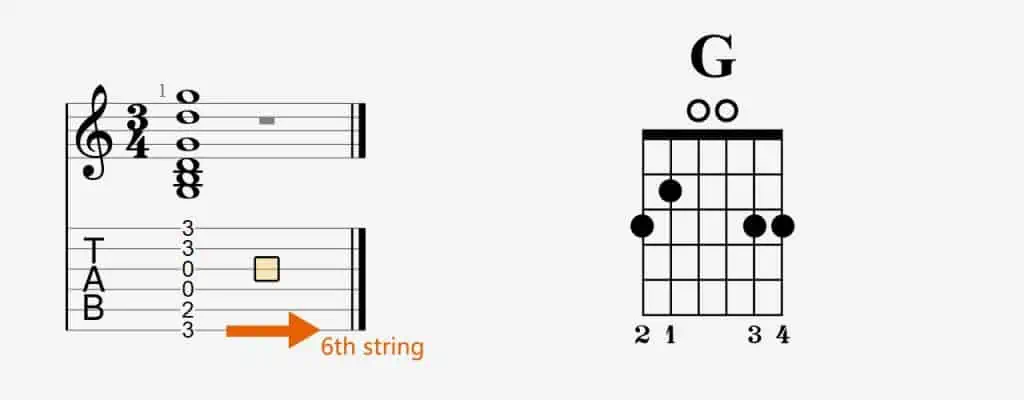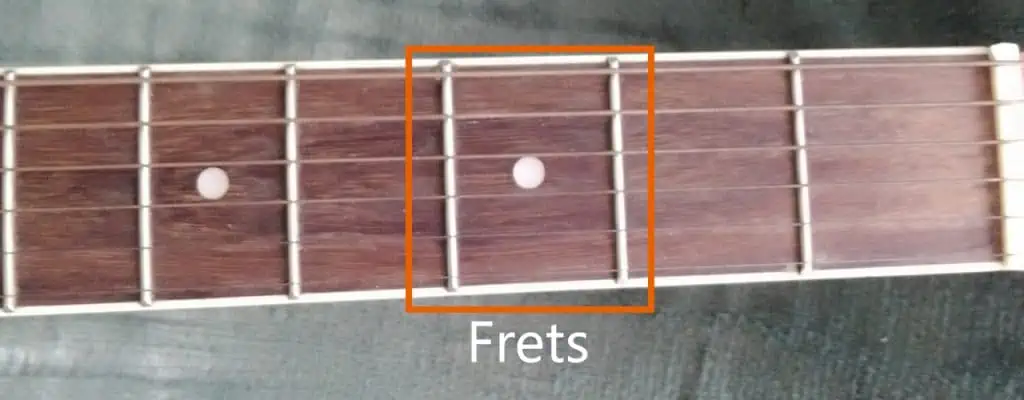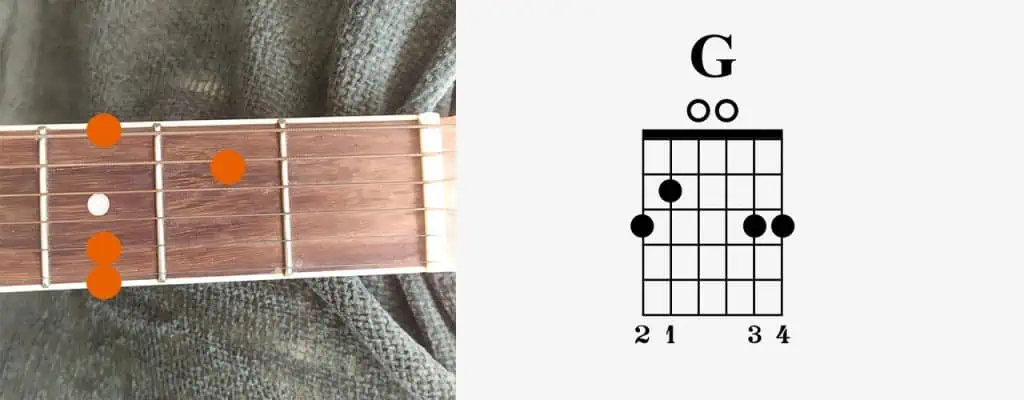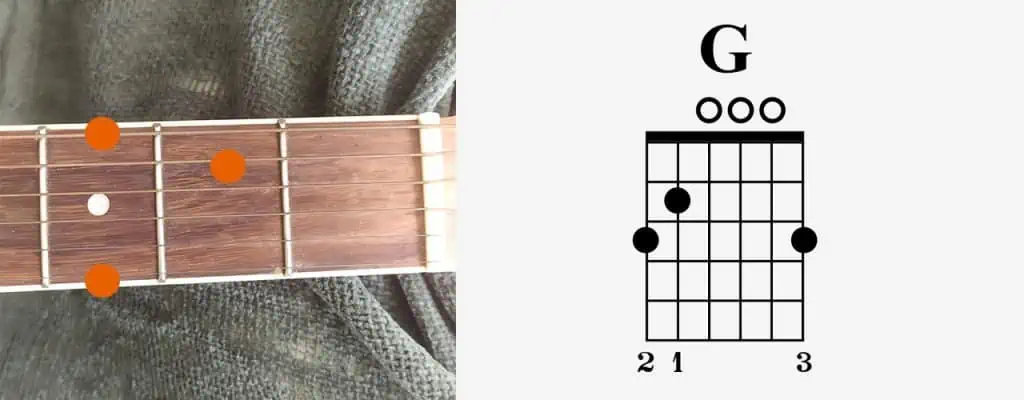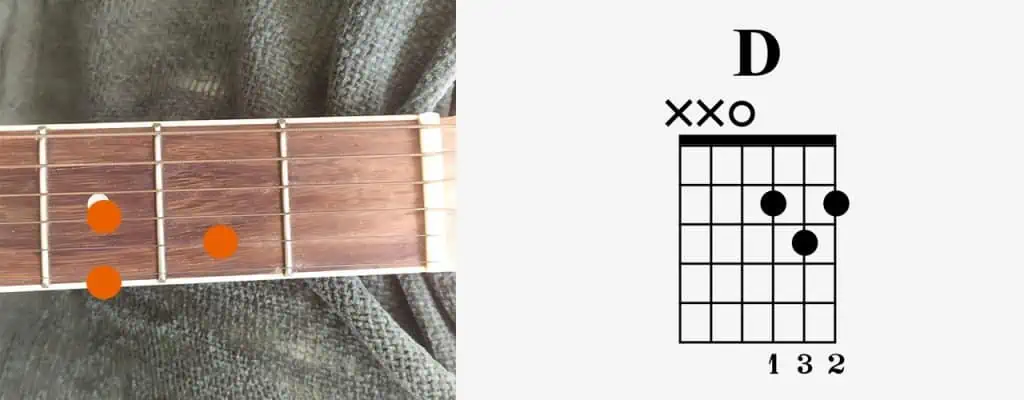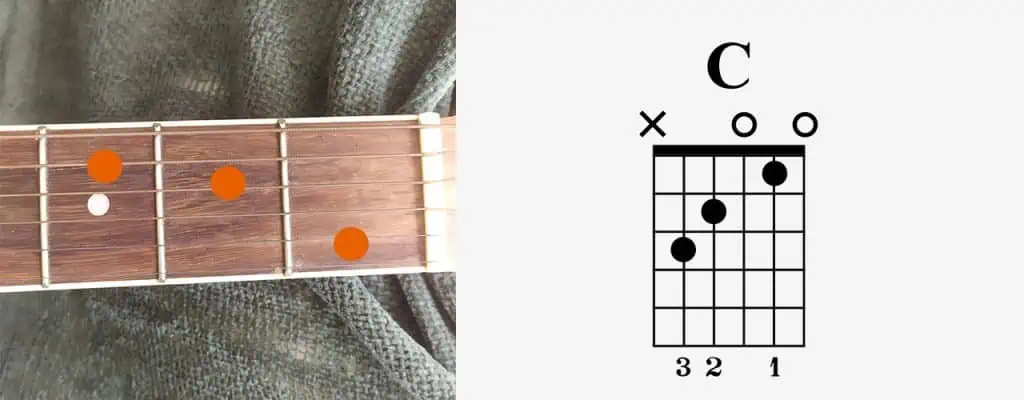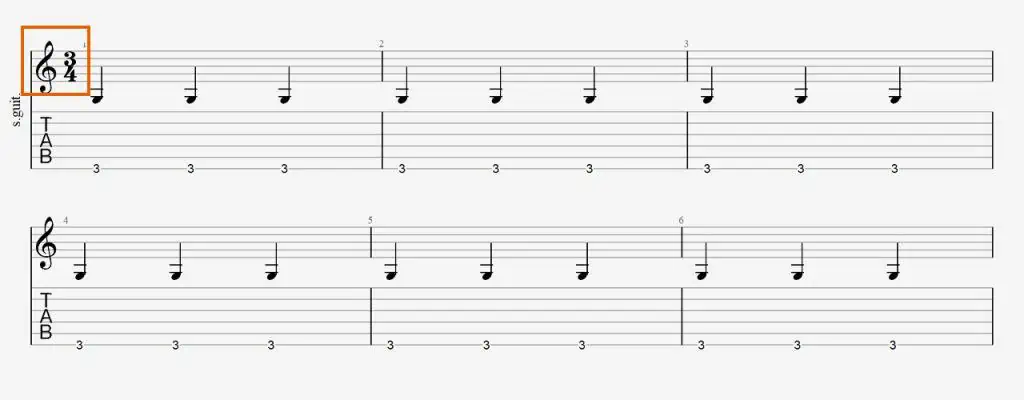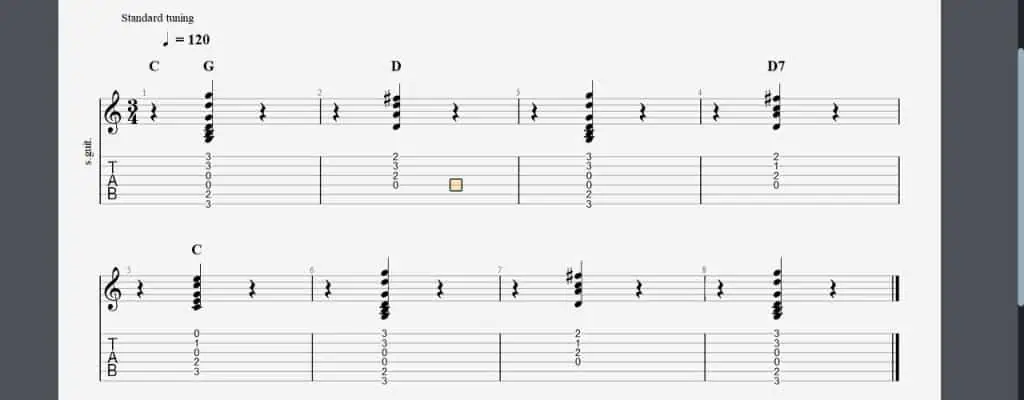Learning guitar can be tough. It can take months to play your first barre chords, or a full year to finally understand what the major scale is.
One of the easiest ways to learn the guitar is by playing songs. You can do so by ear, which means you find the chords and the rhythm on your own. Or you can do it by following a guide.
And we’re guiding you through the happy birthday guitar chords, and how to play the entire song. So get ready to surprise your friends, your family, and maybe your partner with a new trick.
Happy Birthday Guitar Chords Overview
The Happy Birthday song sounds better on classical acoustic guitars.
The happy birthday song is simple enough for beginners. It has three novice-level chords plus a “7th” chord. You or the student may already know the novice chords, and the “7th” version, although it’s not a beginner’s choice, is still easy to play.
In any case, here’re the chords.
- G
- D
- D7
- C
Aside from the chords, we’re studying the time signature, the rhythm, and the strumming patterns. Let’s start with the basics, though, the chords.
In essence, I will share the chords on guitar tables or guitar tabs. These tabs have six strings, which represent the typical guitar strings. The one at the bottom would be the 6th string, which means the biggest one.
In essence, I will share the chords on guitar tables or guitar tabs. These tabs have six strings, which represent the typical guitar strings. The one at the bottom would be the 6th string, which means the biggest one.
Then, you’ll see numbers on each string, which means the fret you have to press on that string.
However, these tabs have two levels. The level above notes the time signature, plus the type of notes to play on each bar. For example:
Lastly, I’m also presenting the chords with their “digitization,” which means the finger number you must use to play these chords. If you’re unfamiliar, it works like so:
- Your index finger is #1;
- Your middle finger is #2;
- Your ring finger is #3;
- And your little finger is #4.
The information I have provided should be enough to understand the following example. Make sure you read the image’s description nevertheless.
The image on the left represents which frets you have to press on each string. The image on the right symbolizes the guitar’s frets, the finger you use to press each fret, and whether or not to mute (X) or play (O) the strings you’re not pressing.
We’re also talking about musical scales and the notes that create each chord. We won’t dive deeper into music theory in this particular article, but we’re linking additional guides from the page if you want to learn more.
Still, let’s start by:
How to create chords?
Let’s cover what “chord” means so you can better understand what follows.
Chords are present on pianos and stringed instruments. These are logical combinations of single notes that you can play simultaneously or in sequence for a robust sound.
There’re hundreds of chords for guitar, and each one follows a rule to deliver specific sounds (harmonious, dissonant or a mix), and be part of a musical note.
In theory, you create chords by combining the notes of any given musical scale. Here’s an additional guide on creating chords on a guitar. In the meantime, remember that:
- The notes of the guitar strings in the standard E tuning are E-A-D-G-B-E, top to bottom)
- Advancing on the frets raises the note of the string by half note on the chromatic scale. The chromatic scale is: C-C#-D-D#-E – F – F#/ – G -G# -A-A#-B
Each fret produces a different note on each string. Combining these notes produces chords.
You’ll see how we’ll create each Happy Birthday song by combining notes on the fret. Each chord form on the guitar fret is called a “shape,” and we’ll deliver the easiest shape for each chord.
The easiest shapes refer to the ones where you don’t use barres, and where your fingers stay close. Also, the easiest shapes are generally on the first three frets.
How To Play The G Chord?
Let’s start by the G chord, which is the example I used. The G chord is a basic tool for every beginner musician, and most pop music you hear includes it.
Regarding the theory, it’s a major chord you can play by playing the 1st, 3rd, and 5th notes of the G major scale. The G major scale is: G-A-B-C-D-E-F#
| Note | Number |
| G | 1 |
| A | 2 |
| B | 3 |
| C | 4 |
| D | 5 |
| E | 6 |
| F# | 7 |
There’re multiple ways to play the G chord, as is the case for most chords on the guitar. The one to remember for the rest of your life looks like this:
- Your finger #1 presses the 2nd fret on the 5th string;
- Your finger #2 presses the 3rd fret on the 6th string;
- Your finger #3 presses the 3rd fret on the 2nd string;
- Your finger #4 presses the 3rd fret on the 1st string;
- The rest of the strings are open, and they must sound.
The G chord can be difficult to manage at first, so we recommend you test it on the 6th and the 5th string first. Once you feel comfortable with the thickest strings, test it while pressing the 1st and the 2nd string.
You can play the 1st and 2nd string with a single finger, or with two fingers.
The G chord has a particularity. It features multiple very similar shapes, so you can easily play with your finger to slightly alter the sound. Here’s the alternative:
- Your finger #1 presses the 2nd fret on the 5th string;
- Your finger #2 presses the 3rd fret on the 6th string;
- Your finger #3 presses the 3rd fret on the 1st string
- Play the other strings as well (open)
You can alter between this and the other alternative as you play any song with G major chords.
How To Play The D Chord?
D is another prominent chord, as it’s present in most songs of all genres. Moreover, it’s the simplest chord to learn and play.
Theory-wise, you can find a D chord on the guitar by playing the 1st, 3rd, and 5th notes of the D major scale. The D major scale is: D-E-F#-G-A-B-C#.
| Note | Number |
| D | 1 |
| E | 2 |
| F# | 3 |
| G | 4 |
| A | 5 |
| B | 6 |
| C# | 7 |
As you’d expect, there’re many ways to play the D chord, but few sound as beautiful as the standard and beginner shapes. Now, use your fingers to press the frets as we’re explaining now:
- Your finger #1 presses the 2nd fret of the 3rd string;
- Your finger #3 presses the 3rd fret on the 2nd string;
- Your finger #2 press the 2nd finger on the first string.
- Don’t play the 6th and 5th strings, but play the 4th string (leave it “open”)
Then, you try strumming the guitar downwards and upwards. However, compared to the G chord, you need to strum the 4th, 3rd, 2nd, and 1st strings only. Don’t strum the 5th and 6th strings in this case, otherwise, it wouldn’t be a D chord.
Avoid playing the 6th and the 5th chord when playing a D chord.
How to Play the D7 Chord?
The D7 chord (D dominant 7) is the result of playing the regular D chord while adding the 7th note.
A 7th note adds dissonance, which may sound as “bluesy” or “jazzy” in your ear. It’s fairly common in many musical genres, though, mainly pop music.
So, you can create a D7 chord by playing the 1st, 3rd, 5th, and flat 7th (b7) notes of the D major scale. A flat note (b) means taking the note half a step back. Check the table below:
| Note | Number |
| D | 1 |
| E | 2 |
| F# | 3 |
| G | 4 |
| A | 5 |
| B | 6 |
| C | b7 |
| C# | 7 |
It may sound complex, but it’s fairly easy to learn. Also, let me remind you that you don’t need to know the theory to play this or any chord -it’s just a nice tool to enhance your skills. So, the easiest way to play the D7 chord would be like this:
Anyhow, a D7 would look like this:
- Your finger #2 presses the 2nd fret on the 4th string;
- Your finger #1 presses the first fret on the second string;
- Your finger #3 presses the 2nd fret on the 3rd string
- Play the 4th string as part of the D7 chord (open), but don’t play the 5th nor the 6th strings
As with other chords on the list, this one should not present extra troubles. You only need three fingers, and the positions are close-by. The difficulty for novice guitar players relies on avoiding the 6th and 5th strings. As a solution, you can try mastering the chord while playing with a downwards strum only (4th string downwards).
The D7 is a sweet and chill-sounding guitar chord.
How to Play the C Chord?
The C chord is the cornerstone for most pop and rock music, and it’s perhaps the first chord every beginner learns. Also, it’s part of the easiest major scale, the C major scale.
To create a C chord, you can play the 1st, 3rd, and 5th note of the C major scale. The C Major scale is: C – D – E- F – G – A- B – C.
| Note | Number |
| C | 1 |
| D | 2 |
| E | 3 |
| F | 4 |
| G | 5 |
| A | 6 |
| B | 7 |
As always, there’re multiple ways to play the C chord, but the beginner friendly way goes as follows:
- Your finger #3 plays the 3rd fret on the 5th string
- Your finger #2 plays the 2nd fret on the 4th string
- Your finger #1 plays the 1st fret on the 2nd string
- Don’t play the 6th string
The “standard” C chord is one of the easiest chords to learn as it only requires three fingers on nearby positions.
After reviewing the chords, let’s study the song’s tempo and rhythm.
Happy Birthday Song Time Signature
Every song has a time signature, which tells you the rhythm you should follow, and when to change chords accordingly.
The song uses a 3/4 tempo, and two chords per bar. If you are not familiar with these terms, just know that you can count three times per every compass of the song.
In other words, three quarter beat notes (musical units of equal times) fit within each bar perfectly. Here’s an example:
A 3/4 time signature means there can be three quarter notes per every bar. Moreover, the song’s pattern generally repeats itself every four bars.
Then, a bar means a segment of the song that holds a specific number of beats. You can divide every song into bars, and each bar represents a segment that repeats itself multiple times.
I want you to do the following exercise to further understand these concepts. Sing the Happy Birthday song in your mind while counting from one to three with your fingers -every time you count the third finger, reset them.
It would look like this:
1——-2——3
Happy Birthday
1–2—3
to you
1——-2——3
Happy Birthday
1–2—3
to you
1——-2——3
Happy Birthday
1——2—–3
dear (Name)
1——-2——3
Happy Birthday
1–2—3
to you
The bold letters you see above represent the “accents” on the song. By that, I mean the times where you would sing a bit louder and, also, the spaces you change the chords.
Additionally, the bold letters always correspond to the second beat of each bar. It’s fairly normal to find 3/4 songs where the accent is on every second beat. Contrary to that would be having the stress on every 1st and 3rd beat.
How to play the Happy Birthday song?
Let me remind you of the happy birthday chords:
- G
- D
- D7
- C
What’s left is putting the chords on rhythm. The trick is changing chords where I typed the bold letters.
1——-G——3
Happy Birthday
1—–D——-3
to you
1——-G——3
Happy Birthday
1—–D7——-3
to you
1——-C——3
Happy Birthday
1——G—–3
dear (Name)
1——-D7——3
Happy Birthday
1—-G—–3
to you
Let’s see it with a visual example:
Happy Birthday (G) to you (D7) / Happy Birthday (G) to you (D7) / Happy Birthday (C) dear (Name) (G) / Happy Birthday (D7 ) / to you (G)
Finally, let’s study the strumming pattern, which is the rhythm to follow, plus upwards and downward guitar strokers.
Happy Birthday song strumming pattern
We’ll share the beginner-level strumming pattern, a safe choice for most songs you’d play at home with your nylon string guitar. If you master this pattern, you can tweak it, evolve it, and modify it as you wish, and make the song your own.
Here’s the basic breakdown:
- Downwards on beat 1 (quarter note)
- Downwards & upwards on beat 2 (eighth note)
- Downwards & upwards on beat 3 (eighth note)


